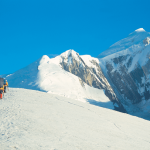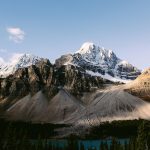K12 Mountain: The Untouched Peak. The Karakoram Range is home to some of the world’s most challenging and majestic peaks. Among them stands K12 Mountain, an enigmatic and formidable summit that remains untouched by human feet. Nestled in the remote reaches of northern Pakistan, K12’s sheer beauty and extreme conditions make it a mountaineer’s ultimate dream and a daunting challenge.
Overview of K12 Mountain
- Height: 7,428 meters (24,370 feet)
- Location: Karakoram Range, Gilgit-Baltistan, Pakistan
- Status: Unclimbed and untouched
K12 Mountain is a testament to nature’s untamed majesty. Despite its proximity to other famous peaks like K2 and Broad Peak, K12 remains in the shadows, drawing the attention of only the most ambitious mountaineers.
Why Is K12 Still Unclimbed?
K12’s untouched status is attributed to several factors:
- Extreme Weather: The Karakoram Range is notorious for its unpredictable and harsh weather conditions.
- Technical Difficulty: Steep ridges, crevasses, and avalanches make climbing exceptionally challenging.
- Remoteness: The logistical challenges of reaching the base camp deter many climbers.
Case Study: Early Expeditions to K12
The British Reconnaissance of 1961
In 1961, a British team led by Eric Shipton conducted an exploratory mission to the region. Their goal was to map and assess the feasibility of climbing K12. While they made significant progress in documenting the terrain, they deemed the peak too dangerous for a full-scale expedition due to unstable weather and technical barriers.
Japanese Attempt of 1975

A Japanese expedition in 1975 aimed to reach the summit but was forced to retreat due to severe snowstorms. The team reported near-impossible climbing conditions, with avalanches being a constant threat.
These early attempts underline the mountain’s treacherous nature and the courage required to even consider an ascent.
The Allure of K12 for Mountaineers
K12’s mystique lies in its:
- Unconquered Status: Being one of the few remaining unclimbed peaks in the Karakoram Range.
- Raw Beauty: Its towering glaciers, rugged ridges, and dramatic ice formations captivate explorers.
- Challenge Level: Its technical demands appeal to seasoned climbers seeking the ultimate test.
Dangerous Routes to K12
The journey to K12 is fraught with hazards that begin long before the climb:
- Trek to Base Camp: Accessing the base camp involves navigating through rugged terrains, glacial rivers, and unstable trails.
- Northern Ridge: Known for its steep inclines and icefall risks, this route is technically demanding.
- Western Approach: Prone to avalanches, the western face offers an unpredictable challenge.
Tips for Future Expeditions
- Plan Logistically: Ensure proper permits and collaborate with local authorities for safer access.
- Weather Monitoring: Constantly track weather conditions to avoid dangerous storms.
- Invest in Equipment: Use cutting-edge climbing gear for extreme altitudes and icy terrain.
- Assemble a Strong Team: Prioritize experience and technical skills in your team selection.
Table of Contents
K12’s Cultural and Environmental Significance
K12 is more than just a climber’s dream; it holds cultural and environmental importance.
- Local Beliefs: For the indigenous communities of Gilgit-Baltistan, the peaks are often considered sacred.
- Pristine Ecosystem: The mountain’s isolation has preserved its unique flora and fauna, making it a critical zone for biodiversity.
Case Study: Environmental Preservation Efforts
In 2010, a local NGO launched a campaign to protect the Karakoram Range from the adverse impacts of tourism and mountaineering. Their efforts included waste management initiatives and educating trekkers about the importance of preserving the pristine environment. This campaign highlighted the delicate balance between exploration and conservation.
Safer Alternatives for Exploration Around K12
For those intrigued by K12’s beauty but unprepared for its challenges, there are nearby trekking routes that offer a glimpse of its majesty:
- Ghondogoro La Trek: Provides panoramic views of K2, Broad Peak, and K12.
- Concordia Trek: A stunning journey through the heart of the Karakoram Range.
Why K12 Captures Global Attention
Despite its obscurity compared to peaks like K2, K12 has garnered global attention for its:
- Unique Challenge: Its unclimbed status appeals to elite climbers worldwide.
- Geographic Importance: As part of the Karakoram, it contributes to the region’s geological and ecological significance.
Tips for Adventure Enthusiasts
- Respect Local Customs: Engage with local communities to better understand their culture and traditions.
- Support Sustainable Tourism: Choose eco-friendly trekking and mountaineering practices.
- Document Your Journey: Share your experiences to inspire others and raise awareness about the region’s beauty.
Conclusion: K12 Mountain: The Untouched Peak
K12 Mountain remains one of the final frontiers of mountaineering, a symbol of nature’s untamed beauty and formidable challenges. While its icy slopes and jagged ridges may continue to deter climbers, they also inspire awe and respect. Whether you’re a mountaineer or an adventurer, K12’s allure is undeniable—a call to explore and preserve the wild.


